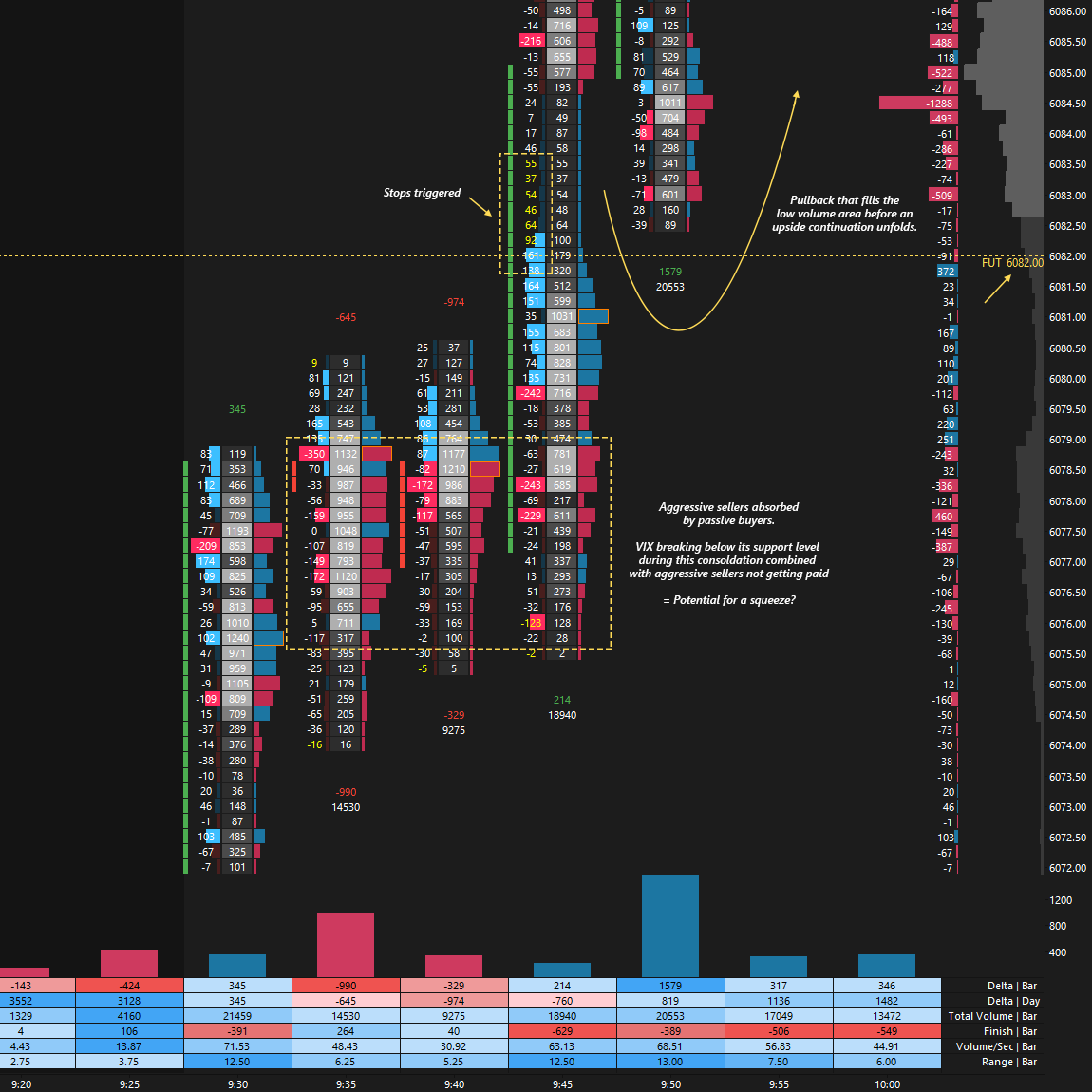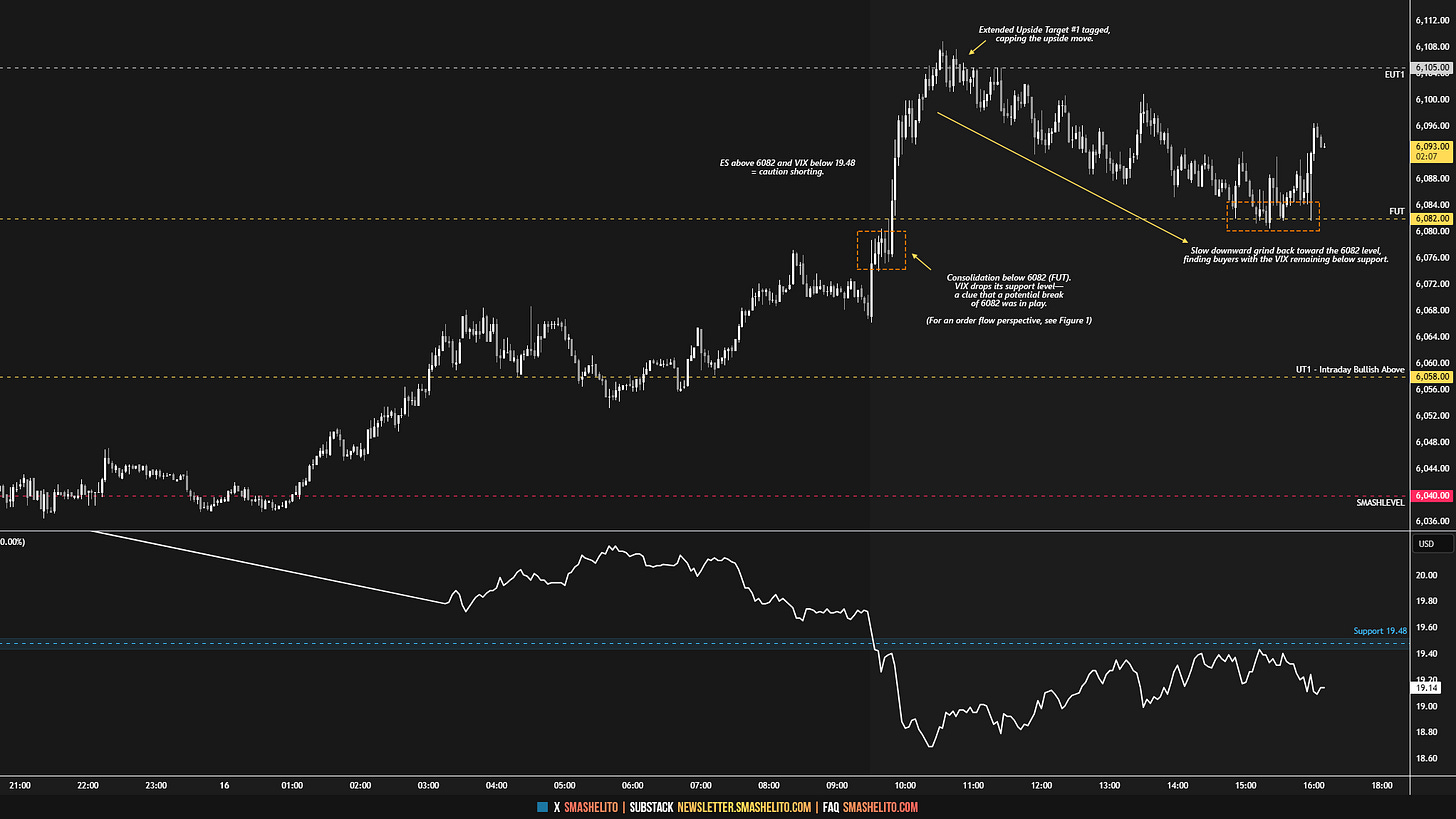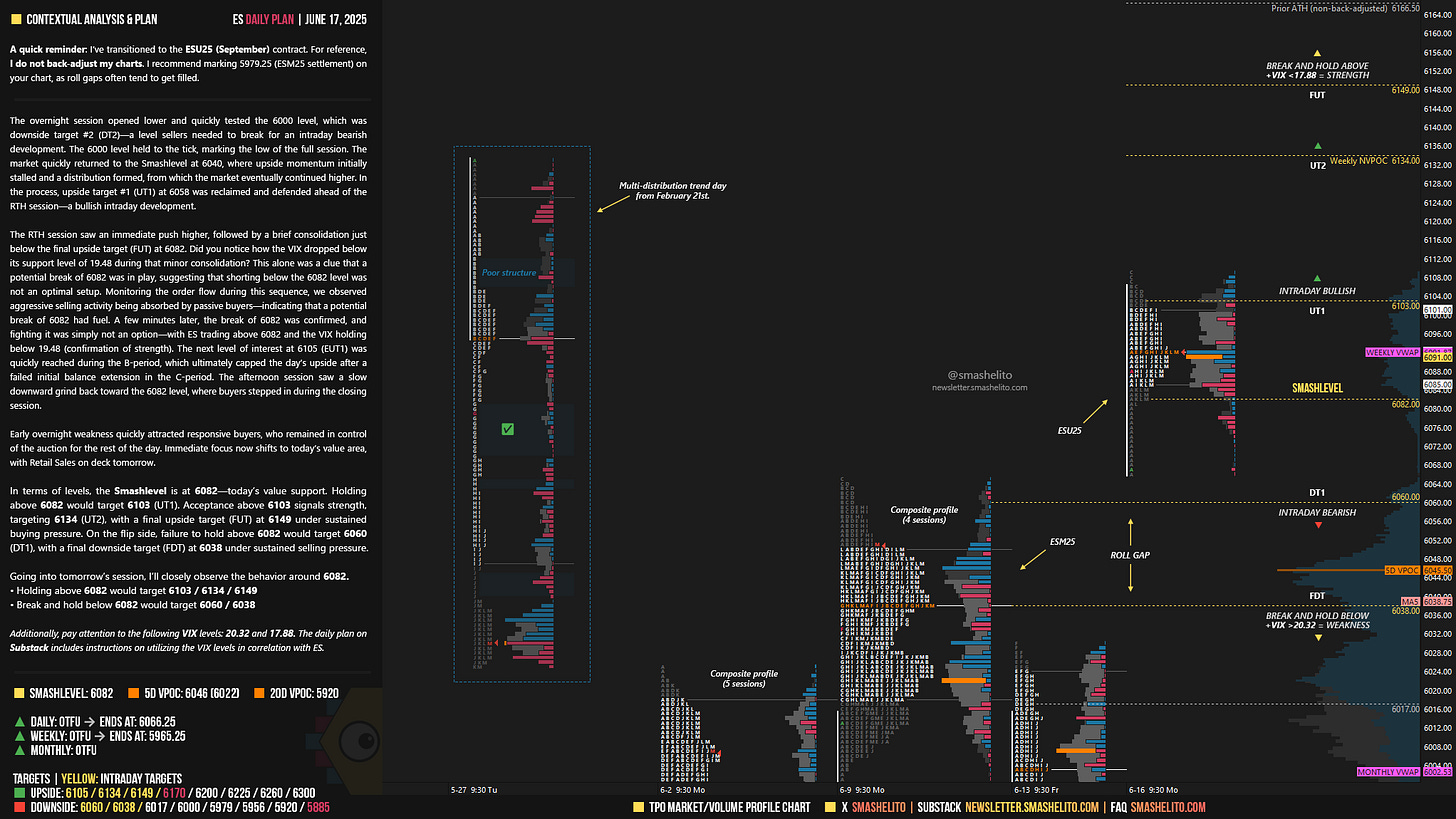ES Daily Plan | June 17, 2025
Recap, Market Context & Key Levels for the Day Ahead
— For new subscribers
The yellow levels highlighted at the bottom left of the chart are the primary intraday levels I focus on. To avoid impulsive decisions at poor trade locations, I follow a simple but effective rule: exercise caution when initiating trades outside of these yellow levels.
This means I’m cautious about chasing longs above the Final Upside Target (FUT) and shorts below the Final Downside Target (FDT). It’s important to understand that not chasing does not imply initiating a trade in the opposite direction — discipline over impulse.
Be sure to review the ES Weekly Plan | June 16-20, 2025 for a broader perspective, key levels, and market expectations for the week ahead.
Contract Rollover
A quick reminder: I’ve transitioned to the ESU25 (September) contract. For reference, I do not back-adjust my charts. I recommend marking 5979.25 on your chart, as roll gaps often tend to get filled.
“Contract rollovers can be confusing. While some traders choose to back-adjust their charts, I prefer to leave historical levels unchanged, which results in a visible roll gap. This is a matter of personal preference—neither approach is inherently better, as both have pros and cons. For short-term traders, the impact is generally minimal, since we navigate the market day by day. I typically scale back activity during rollover periods, as order flow tends to become noticeably less reliable.”
Contextual Analysis & Plan
The overnight session opened lower and quickly tested the 6000 level, which was downside target #2 (DT2)—a level sellers needed to break for an intraday bearish development. The 6000 level held to the tick, marking the low of the full session. The market quickly returned to the Smashlevel at 6040, where upside momentum initially stalled and a distribution formed, from which the market eventually continued higher. In the process, upside target #1 (UT1) at 6058 was reclaimed and defended ahead of the RTH session—a bullish intraday development.
The RTH session saw an immediate push higher, followed by a brief consolidation just below the final upside target (FUT) at 6082. Did you notice how the VIX dropped below its support level of 19.48 during that minor consolidation? This alone was a clue that a potential break of 6082 was in play, suggesting that shorting below the 6082 level was not an optimal setup. Monitoring the order flow during this sequence, we observed aggressive selling activity being absorbed by passive buyers—indicating that a potential break of 6082 had fuel (see Figure 1). A few minutes later, the break of 6082 was confirmed, and fighting it was simply not an option—with ES trading above 6082 and the VIX holding below 19.48 (confirmation of strength). The next level of interest at 6105 (EUT1) was quickly reached during the B-period, which ultimately capped the day’s upside after a failed initial balance extension in the C-period. The afternoon session saw a slow downward grind back toward the 6082 level, where buyers stepped in during the closing session.
Early overnight weakness quickly attracted responsive buyers, who remained in control of the auction for the rest of the day. Immediate focus now shifts to today’s value area, with Retail Sales on deck tomorrow.
In terms of levels, the Smashlevel is at 6082—today’s value support. Holding above 6082 would target 6103 (UT1). Acceptance above 6103 signals strength, targeting 6134 (UT2), with a final upside target (FUT) at 6149 under sustained buying pressure.
On the flip side, failure to hold above 6082 would target 6060 (DT1), with a final downside target (FDT) at 6038 under sustained selling pressure.
Levels of Interest
Going into tomorrow’s session, I’ll closely observe the behavior around 6082.
Holding above 6082 would target 6103 / 6134 / 6149
Break and hold below 6082 would target 6060 / 6038
Additionally, pay attention to the following VIX levels: 20.32 and 17.88. These levels can provide confirmation of strength or weakness.
Break and hold above 6149 with VIX below 17.88 would confirm strength.
Break and hold below 6038 with VIX above 20.32 would confirm weakness.
Overall, it's important to exercise caution when trading outside of the highlighted yellow levels. A non-cooperative VIX may suggest possible reversals i.e trade setups.





Superb stuff Smash! Thank you!
Hey Smash, been reading your posts for a while and I have to say I love the in-depth explanations and clean formatting.
My only question is what VIX do you look at? I see many on tradingview
VOLATILITY S&P 500 (TVC)
CBOE VOLATILITY INDEX (CBOE)
VOLATILITY INDEX (CAPITALCOM)